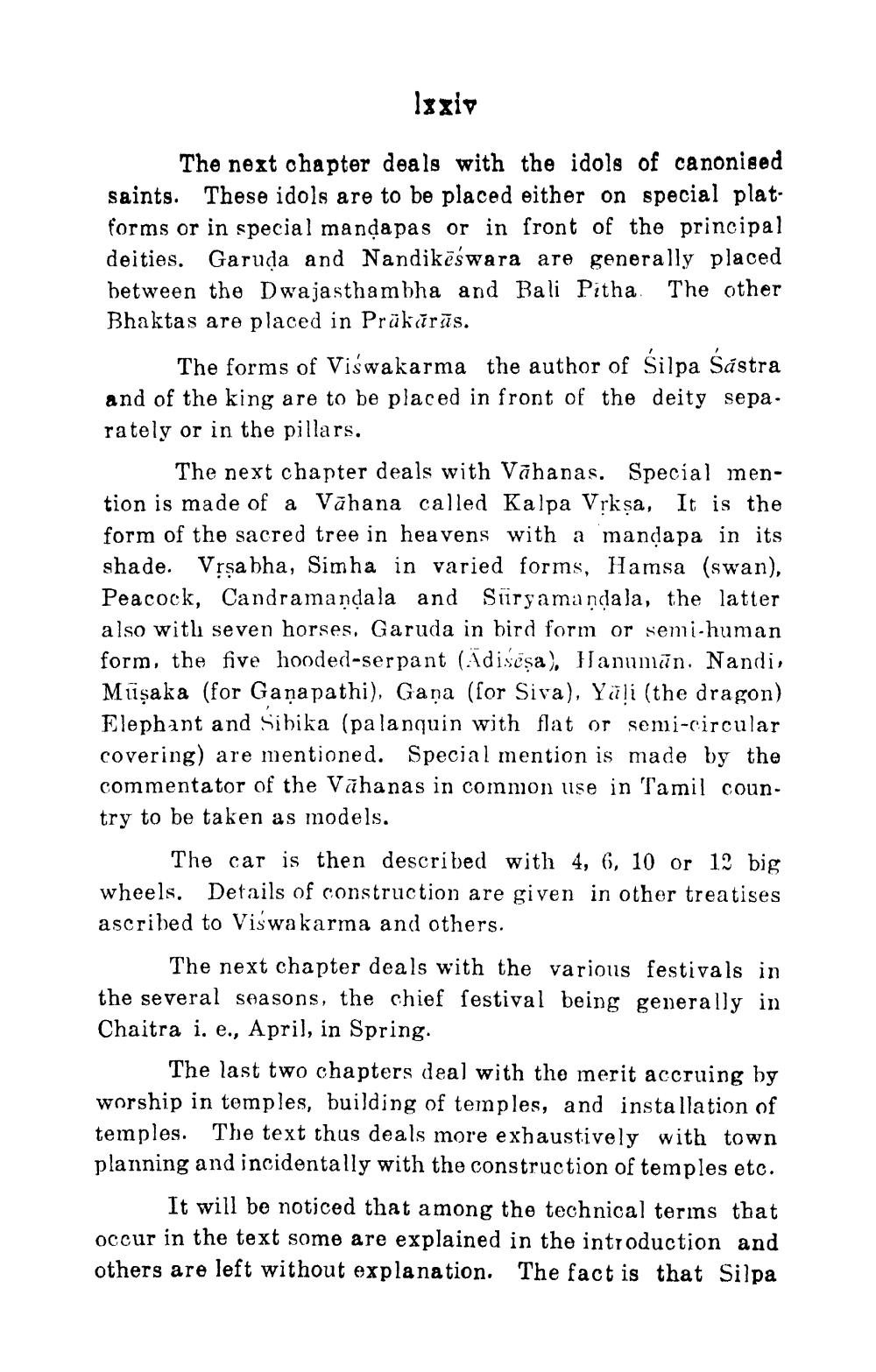________________
lxxiv
The next chapter deals with the idols of canonised saints. These idols are to be placed either on special platforms or in special manḍapas or in front of the principal deities. Garuda and Nandikeswara are generally placed between the Dwajasthambha and Bali Pitha. The other Bhaktas are placed in Prükārās.
The forms of Viswakarma the author of Silpa Sastra and of the king are to be placed in front of the deity sepa. rately or in the pillars.
The next chapter deals with Vahanas. Special mention is made of a Vahana called Kalpa Vrksa, It is the form of the sacred tree in heavens with a mandapa in its shade. Vṛṣabha, Simha in varied forms, Hamsa (swan), Peacock, Candramandala and Süryamandala, the latter also with seven horses, Garuda in bird form or semi-human form, the five hooded-serpant (Adisesa), Hanuman. Nandi, Müşaka (for Ganapathi), Gana (for Siva), Yali (the dragon) Elephant and Sibika (palanquin with flat or semi-circular covering) are mentioned. Special mention is made by the commentator of the Vahanas in common use in Tamil country to be taken as models.
The car is then described with 4, 6, 10 or 12 big wheels. Details of construction are given in other treatises ascribed to Viswakarma and others.
The next chapter deals with the various festivals in the several seasons, the chief festival being generally in Chaitra i. e., April, in Spring.
The last two chapters deal with the merit accruing by worship in temples, building of temples, and installation of temples. The text thus deals more exhaustively with town planning and incidentally with the construction of temples etc.
It will be noticed that among the technical terms that occur in the text some are explained in the introduction and others are left without explanation. The fact is that Silpa




